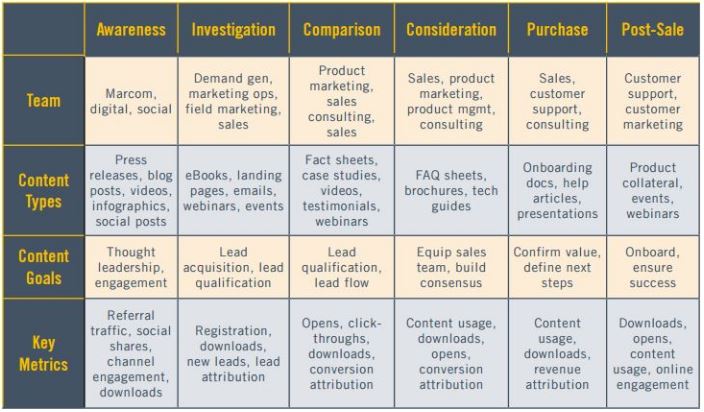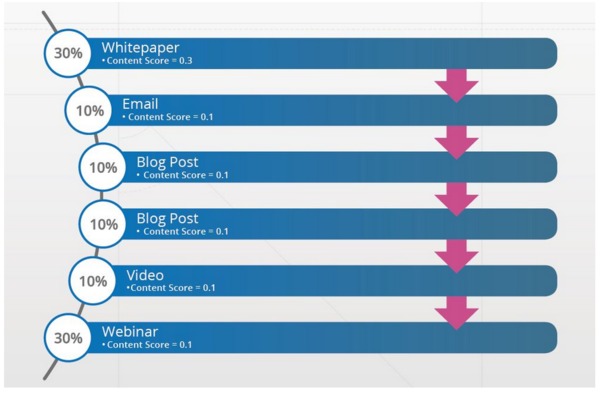
“You will use math again when you get older,” my algebra teacher told me as I looked at him in disbelief thinking I would never need to use his chalkboard equations again in my adult life. Well, Mr. Stafford, you were right… and I was wrong. And never would I have ever imagined that I would be using math on the internet as a regular practice.
Calculations and numbers are a necessary evil if you want to measure the value of your content. It’s all fun and games when you are creating the content and coming up with cool ideas. But, at the end of the day, you have to dial down and start crunching the numbers. Thankfully, it’s not as hard as calculus or algebra and you don’t even need a math class to do it.

This was never me in my algebra class.
Calculating the value of your content marketing is a somewhat obscure topic. If you search through Google, you will find hundreds of thousands of articles discussing it, yet few that break down the actual numbers. That’s because there are dozens of metrics and calculations you can use and it can be confusing and overwhelming figuring out which ones apply to you. Not surprisingly, according to a Content Marketing Institute study, only 21% of marketers say they successfully track their content marketing ROI.
Don’t be another statistic in a content marketing study. Calculating a content marketing ROI isn’t that difficult. Let’s break it down, and I promise, no algebra!
Content Marketing ROI for Sales
While there are multiple content marketing metrics you can measure, in this article we will discuss sales revenue, as this is typically most important to organization decision makers (CMOs, CFOs).
What you want to measure is whether or not the content you are producing in a specific campaign translates to a greater return than the money you invested in creating it.
The calculation you will use is:
Content marketing ROI = Revenue from content piece x / (Production cost of x + Promotion cost of x)
Your production costs will include content creators, editors, graphic designers, developers, software, stock images, etc., basically any service/resource required to produce the content piece.
Your promotion costs may include advertising and/or media placements, press releases or any other PR costs.
The revenue is a bit trickier to calculate and one reason why many companies do not know how to effectively calculate a content marketing ROI.
How to calculate sales revenue from content

To calculate the revenue produced from a particular piece of content, you will need tracking in place at all of your content entry points. Create separate tracking links or links with identifiers for each piece of content so you can determine what revenue (from sales) comes from each piece.
There are several ways to set this up. One way is to use Google UTM parameters and set conversion goals in Google Analytics. This is free but takes a little know-how to set up. You can find some good information on that here.
Also, you can use a software platform that will automate this tracking and conversions process for you. Find some great solutions in this blog post here we did on the Ultimate List of Content Marketing Analytics Tools.
ROI Example
Let’s say you sell a full-scale dog training product for $100. You created a blog post on dog training and in your post, you link to your free lead offer, “How to Train Your Dog in 5 Easy Steps.” When people opt in to receive this lead offer, you take them through a series of emails where you eventually pitch your $100 dog training product.
Here is the simple calculation. Let’s say you spent $1000 on creating this lead magnet along with the corresponding blog post. You spent $500 promoting it on Facebook. So your total cost is $1,500 for the content creation + promotion.
From your tracking, you determined that 50 people who received this lead offer during your Facebook ad campaign purchased your dog training product. This translates into 50 people x $100 = $5,000 in revenue.
Inputting these numbers into our equation above, it would look like this:
$5,000 / $1,500 = 3.33 x 100 (to get a percentage) = 333% ROI for this piece of content.

You should be as happy as this dog with an ROI like that!
Generally, you will calculate your ROI during a specific promotional period, but don’t forget to also calculate your ROI continuously even when your promotional period has ended. If your content is being shared or getting some Google love, it will attract visitors for months and years. Therefore, keep an eye on your metrics monthly as your ROI will change over time as you develop momentum.
If you have more lead offers on your blog post, create unique tracking links for each one even though they are located on the same blog post. This way, you can calculate the ROI of each piece. Then, if you want to calculate the ROI of the actual blog post, add up the results from the individual ROI calculations from each content piece tied to that blog.
Content Scoring
For more advanced calculations, content scoring is another way marketers can determine the value for specific pieces of content. Content scoring measures the engagement and value of content distributed during the buyer’s journey.
To score your content and determine its value, the first step is to map out the content you produce for each stage of the buyer’s journey.

Source (Kapost)
Then, assign a numerical value to each piece of content a prospect touches during its journey.
Kapost uses the first/last touch model. In this model, you apply a higher content score to the content located at the first and last stage of your buyer’s journey.
Here is how Kapost assigns its content scores:

Source (Kapost)
Content scoring won’t give you an exact ROI but it can reveal how effective a piece of content is in your sales process. This data will expose positive trends and patterns you can use to evaluate which piece of content is most valued by your prospects and leads.
Need more advice? Media Shower works with brands to create and publish content and help them calculate an ROI for their content marketing initiatives.
